Do you have a question about the Panasonic TX-40MS490E and is the answer not in the manual?
Crucial instructions for safe setup and operation.
Explains symbols used on the product for safety.
Important safety guidelines for wall mounting.
Panasonic's disclaimer for product misuse or damage.
Regular care and cleaning instructions for the TV.
Steps for attaching or detaching the TV stand.
Welcome message and list of included accessories.
Highlights key functionalities of the TV.
Guide to connecting antenna and satellite inputs.
Details various connector types and their usage.
Instructions for connecting the TV to power.
How to switch between standby and operating modes.
How to use the TV's built-in control joystick.
Using the remote control for TV functions.
How to switch between different input sources.
Guide to installing batteries in the remote.
Steps to pair the remote with the TV.
Setting language, region, and starting initial setup.
Connecting to network and signing into Google account.
Accepting Google's terms and policies.
Configuring Google services and Assistant settings.
Setting a PIN and choosing Home/Store mode.
Configuring Chromecast and TV tuners.
Configuring LNB, signal, and channel scans.
Navigating and using the main TV interface.
Accessing channel lists and search functions.
Adjusting picture, sound, and power settings.
Configuring sleep timers and CI card options.
Connecting to Wi-Fi and Ethernet.
Scanning for and updating channels.
Options for organizing and filtering channels.
Editing channel names, numbers, and deleting channels.
Configuring cable TV channels.
Configuring satellite TV channels.
Scanning and tuning analogue channels.
Editing and managing channel lists.
Signing into and managing your Google account.
Installing, managing, and organizing apps.
Checking for updates and resetting the TV.
Configuring TV's date, time, and timers.
Adjusting visual aspects of the TV display.
Noise reduction, contrast, and colour adjustments.
Optimizing settings for gaming and PC use.
Fine-tuning colour and white balance.
Selecting sound profiles and configuring audio output.
Managing USB storage devices for the TV.
Power saving, screen saver, and location settings.
Settings for visually impaired and pairing Bluetooth devices.
Organizing and finding channels.
Editing channel lists and managing favourite channels.
Using the Electronic Programme Guide to view schedules.
Connecting the TV via Ethernet cable.
Connecting the TV via Wi-Fi.
Playing videos, music, and photos from USB.
Using the TV as a digital photo frame.
Enabling automatic playback of USB media.
Controlling connected HDMI devices with the TV remote.
Streaming content from mobile devices to the TV.
Using Hybrid Broadcast Broadband TV services.
Keeping the TV software up to date.
Troubleshooting power issues.
Troubleshooting remote control issues.
Resolving issues with channels, picture, or sound.
Diagnosing picture quality problems.
Troubleshooting audio issues.
Resolving issues with selecting input sources.
Table of supported VGA resolutions.
Compatibility of AV and HDMI signals.
List of supported video codecs and containers.
Details on video encoding standards.
Details on audio encoding standards.
Supported subtitle file types and parsers.
Table showing DVI resolutions and frequencies.
Technical details on broadcasting and wireless LAN.
Regulations for wireless LAN usage in different countries.
Information on digital TV standards and services.
Details on licensed technologies like HDMI, Dolby, Google.
Guidelines for environmentally friendly disposal.
Statement of compliance with EU directives.
Crucial instructions for safe setup and operation.
Explains symbols used on the product for safety.
Important safety guidelines for wall mounting.
Panasonic's disclaimer for product misuse or damage.
Regular care and cleaning instructions for the TV.
Steps for attaching or detaching the TV stand.
Welcome message and list of included accessories.
Highlights key functionalities of the TV.
Guide to connecting antenna and satellite inputs.
Details various connector types and their usage.
Instructions for connecting the TV to power.
How to switch between standby and operating modes.
How to use the TV's built-in control joystick.
Using the remote control for TV functions.
How to switch between different input sources.
Guide to installing batteries in the remote.
Steps to pair the remote with the TV.
Setting language, region, and starting initial setup.
Connecting to network and signing into Google account.
Accepting Google's terms and policies.
Configuring Google services and Assistant settings.
Setting a PIN and choosing Home/Store mode.
Configuring Chromecast and TV tuners.
Configuring LNB, signal, and channel scans.
Navigating and using the main TV interface.
Accessing channel lists and search functions.
Adjusting picture, sound, and power settings.
Configuring sleep timers and CI card options.
Connecting to Wi-Fi and Ethernet.
Scanning for and updating channels.
Options for organizing and filtering channels.
Editing channel names, numbers, and deleting channels.
Configuring cable TV channels.
Configuring satellite TV channels.
Scanning and tuning analogue channels.
Editing and managing channel lists.
Signing into and managing your Google account.
Installing, managing, and organizing apps.
Checking for updates and resetting the TV.
Configuring TV's date, time, and timers.
Adjusting visual aspects of the TV display.
Noise reduction, contrast, and colour adjustments.
Optimizing settings for gaming and PC use.
Fine-tuning colour and white balance.
Selecting sound profiles and configuring audio output.
Managing USB storage devices for the TV.
Power saving, screen saver, and location settings.
Settings for visually impaired and pairing Bluetooth devices.
Organizing and finding channels.
Editing channel lists and managing favourite channels.
Using the Electronic Programme Guide to view schedules.
Connecting the TV via Ethernet cable.
Connecting the TV via Wi-Fi.
Playing videos, music, and photos from USB.
Using the TV as a digital photo frame.
Enabling automatic playback of USB media.
Controlling connected HDMI devices with the TV remote.
Streaming content from mobile devices to the TV.
Using Hybrid Broadcast Broadband TV services.
Keeping the TV software up to date.
Troubleshooting power issues.
Troubleshooting remote control issues.
Resolving issues with channels, picture, or sound.
Diagnosing picture quality problems.
Troubleshooting audio issues.
Resolving issues with selecting input sources.
Table of supported VGA resolutions.
Compatibility of AV and HDMI signals.
List of supported video codecs and containers.
Details on video encoding standards.
Details on audio encoding standards.
Supported subtitle file types and parsers.
Table showing DVI resolutions and frequencies.
Technical details on broadcasting and wireless LAN.
Regulations for wireless LAN usage in different countries.
Information on digital TV standards and services.
Details on licensed technologies like HDMI, Dolby, Google.
Guidelines for environmentally friendly disposal.
Statement of compliance with EU directives.
| Screen Size | 40 inches |
|---|---|
| Resolution | 1920 x 1080 pixels |
| Display Technology | LED |
| Smart TV | Yes |
| HDMI Ports | 3 |
| USB Ports | 2 |
| Wi-Fi | Yes |
| Ethernet | Yes |
| Audio Output | 20 W |
| Refresh Rate | 50 Hz |
| Bluetooth | No |
| Weight | 8.5 kg |
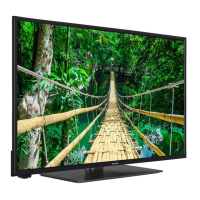
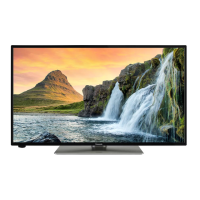
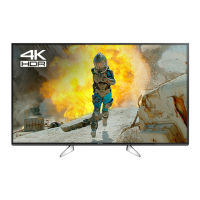
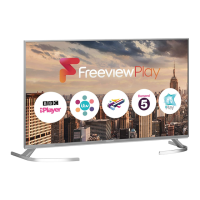

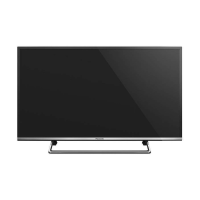

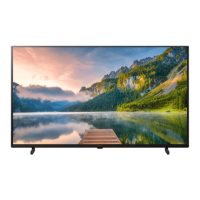


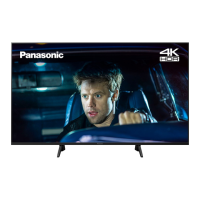
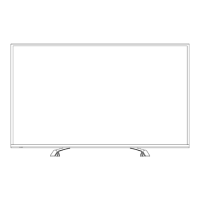
